List of Authors
>>About this blog
Recent blog post
|
[Edamame]
February 23, 2019 09:00
This is Edamame, a correspondent with children.
Today, February 15, 2019.
A new type of hotel with rental housing
"HAMACHO HOTEL" has opened!
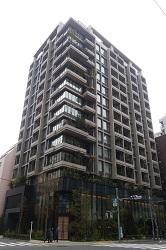
The state of the building is being built as an edamame of neighboring residents.
I was looking forward to seeing you every day.
What is the interest of local residents?
"What kind of good shop can I have?"
That's right. There will definitely be a delicious restaurant in the hotel.
In many cases, high-quality confectioneries are also included.
I'm looking forward to it.
So, first of all, today is the first day of the opening.
It was newly opened in the hotel.
I visited "nel CRAFT CHOCOLATE TOKYO".
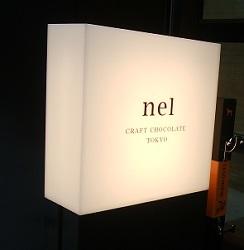
The entrance facing the road has sides and stairs that do not face the main street.
Considering easy-to-understand and barrier-free routes
It might be better to enter from the front entrance of the hotel facing Kiyosubashi-dori.

Enter the hotel entrance and proceed to the back of your right and you will be able to arrive at the store properly.
Well, in the shop right away.
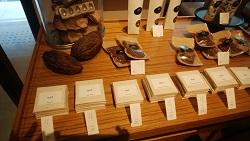
There are various kinds of tablet chocolates right next to the entrance.
It was displayed with cacao.
"Ghana", "Venezuela", "Bunchapbetonam", etc.
There are a lot of chocolates with the name of the cacao production area.
The percentage of cacao seems to be different, and it seems fun to compare eating.
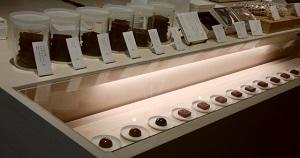
The chocolate bonbon was also displayed here.
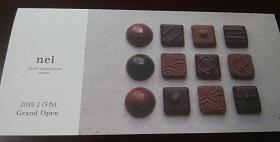
Is it easier to understand the shape of the picture in the pamphlet?
It was made of cacao made by contract farmers in Vietnam
In addition to "Bunchapbentonam"
It is only made from special ingredients such as "Tamba Black Bean Kinako" and "Yuzu".
It is said that the name of the shop "nel" comes from "kneading".
"Delivering chocolate kneaded with carefully selected materials and craftsmanship with true heart."
You're making it with that feeling.
Chef Chocolatier goes to the production area by himself
It contains carefully selected cacao beans and ingredients selected from producers.
Chocolate completed with high technology, incorporating ingredients unique to Japan.
All of them make you feel the high quality.
In addition, "late citrus peel" using Amakusa late citrus from Kumamoto and
"Chocola Show (Chocolate Drink)" etc.
All of them are attractive, and they're in trouble with their eyes.
This is what I bought today.

"Nihonbashi hamachoco" (1080 yen including tax).
It's in your mouth! !
It was a creamy and delicious chocolate with a smooth mouthfeel.
Is there a little liqueur in it? That's what you say
I felt soft later.
(So, this is not a snack of my daughter Azuki (3 years old)
It will be a snack at midnight for mother Edamame .) .)
There are special items that can only be obtained here.
It seems that you will be pleased when you want to make souvenirs somewhere in the future.
As a local resident, I will continue to take care of you.
Let's compare the eating of tablets this time?
Or would you like to try the Chocolat Show in the cold season?
I'm looking forward to seeing you next time.
And ... a restaurant in the hotel that I haven't visited yet.
I was thrilled to see you in the future.
 nel CRAFT CHOCOLATE TOKYO nel CRAFT CHOCOLATE TOKYO
3-20-2, Nihonbashihamacho, Chuo-ku, Tokyo
Inside HAMACHO HOTEL
03-5643-7123
Business hours 10:00 to 20:00 irregular holidays
http://nel-tokyo.jp/
 HAMACHO HOTEL HAMACHO HOTEL
3-20-2, Nihonbashihamacho, Chuo-ku, Tokyo
https://hamachohotel.jp/
[Hanes]
February 21, 2019 12:00
Hello. I'm a new correspondent (Hanes) 
As March approaches, it's time to find a "small spring".
Kikaku Takarai, a poet related to Chuo-ku, wrote about the spring of Edo (New Year).
"There is no day when one bell can't be sold, spring in Edo"
It is said that Edo was prosperous enough to sell even the bells of temples that are unlikely to sell.
I can't see such a sight now, but
In Chuo-ku, there are many bells that have seen the passage of time for a long time.
This time, I went to see some of these bells.
■Bronze Bell, Kokumachi Bell (Nihonbashi Kodenmacho 5-2) / Made in Japan
This bell, which was set up in Honishi-cho around the time of the second shogun Hidetada, informs people of Edo Castle about the time.
Because it was near Nagasakiya, Kawayanagi was written saying, "The bell of Kokumachi can be heard to the Netherlands."
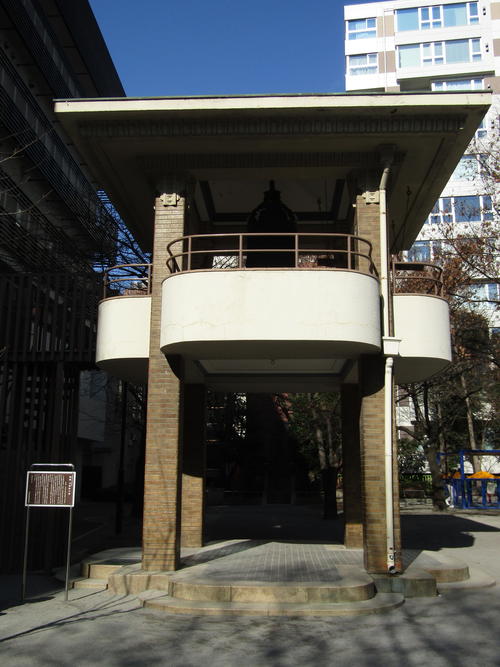
The bell is about 170cm tall and is about the average height of an adult man.
(Speaking of about 170cm in Chuo-ku)...The iron bodhisattva head of Daikanonji also has the same size. )
I can hit this bell specially on New Year's Eve, so I would like to try it someday.
■Catholic Tsukiji Church (5-26 Akashicho) / Made in France
Here is the copper-made Western Bell (Kumin Tangible Cultural Property), commonly known as "JEANNE LOUISE DE YEDO" in Edo.
This bell was cast and donated in 1876.
At that time, during the Meiji era, it was already renamed "Edo" to "Tokyo".
So why was it named "Janne Louise of Edo" as the bell name suggests?...
The reason for this is that at the time of ordering the bell to Renne, the name "Tokyo" was not yet thoroughly enforced.
The event that could be said to be the origin of the Sumida River Fireworks Festival was held in 1732.
The name has changed with the times, and it seems that the current name has taken root is newer than expected.
Looking at the changes in the name, it is interesting to get a glimpse of the background and intentions of the times.
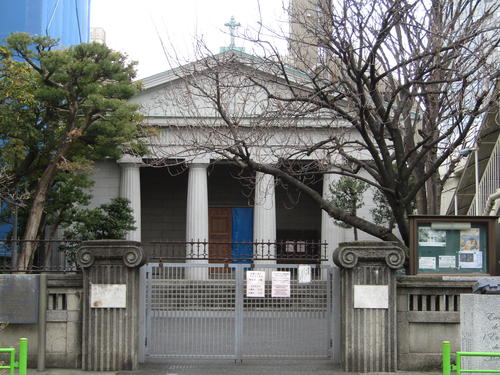
The "Adelaide Josephine," a bell that once duet with this bell, is known as "Adelaide Josephine."
This is exactly what Harumi Madam introduced last year.
Both bells were spared from the metal supplies of Pacific War, and did not become cannons.
As an aside, Jeanne Louise remains intact to this day, whereas
The Adelaide Josephine has overcome the rough waves of the times.
The bell was engraved with the name of the French legal scholar Boasonard.
I was able to escape the metal supply at Pacific War, but
Once broken, it was recasted in 1957 with the donation of a believer at Sekiguchi Church.
■Peace Bell (in the median strip between Nihonbashi 3-4 and Kyobashi 1-1) / Made in the Netherlands
This bell commemorates the 380th anniversary of Osamu Nichiran in 1989.
It was established by Chuo-ku in hope of world peace as a member of an international city.
The 26 bells are the largest in the world in the manufacture of Carillon Swing Bells.
With more than 100 years of history and excellent technology and achievements, he was awarded the title of "Royal" by the Dutch royal family.
Manufactured by Royal I Suvautu, Netherlands 
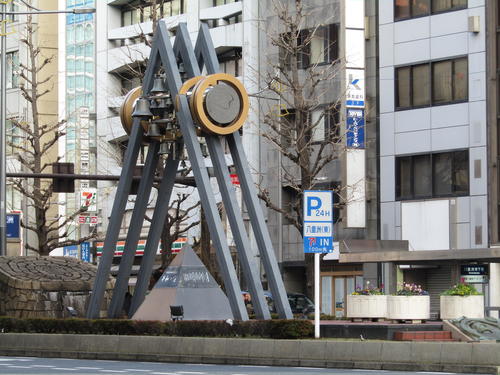
The bell plays a song typified by the song "My Town" in Chuo-ku at 0 minutes every hour.
If you are concerned about the melody, or if you live far away, please contact us.
From Heiwa, Chuo-ku Prayer Virtual Museum
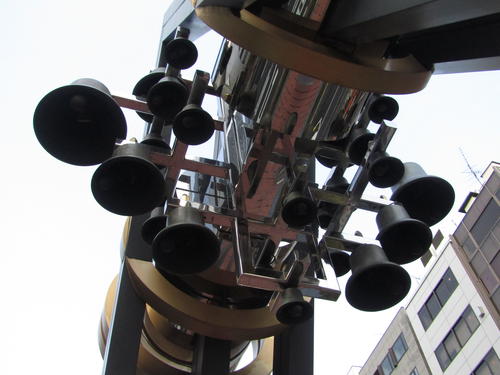
■Ginza Bell (Ginza Church: Ginza 4-2-1) / Made by U.K.
This is not so known compared to the above three bells, but
It is located on the right side of the stairs of Ginza Church.
It is a historical bell that has witnessed the transition of Ginza for about 90 years since the third hall was built in 1928.
However, it was cast in 1878, the same age as the bell of the Catholic Tsukiji Church!
Blews & Son (Blews & Son) in Birmingham City has a total of 227 kg.
The owner, William Bruus, remains a record as a craftsman making brass candlesticks, but
It seems that the church bell was also cast, and the bell of the time remains in the home base Birmingham.
How did this church bell cross the sea?...Don't you bother me?
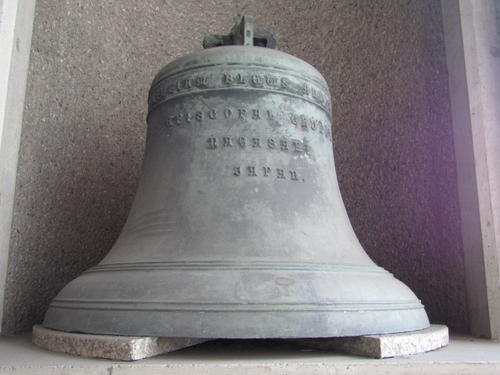
So, if you look at the bell inscription, you can see words about the casting company or church, but take a closer look at lines 3 to 4.
Why isn't it engraved with NAGASAKI JAPAN?
This is a great clue for the bell to come to Ginza.
As a British lover, I couldn't pull down here, so after further investigation, I found the following:
In 1873 (Meiji 11), the oldest protestant sacred school in Japan, which later became Dejima Holy Public Hall Theological School, was established in Nagasaki.
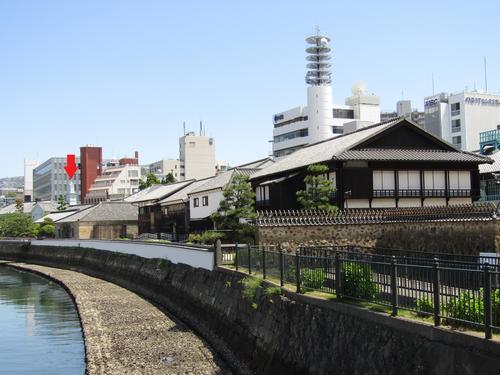
(This building is indicated by a red arrow. When I visited last year, I didn't know that it was related to the Ginza Church. )
At that time, this bell, which Thomas Graver ordered, was attached.
However, the bell fell in an earthquake that occurred in 1922....
After that, missionary Scott has bought it.
The following year, the Great Kanto Earthquake occurred, and the Ginza Church was burned down....
It was revived in 1928, when the aforementioned Third Hall was completed.
At this time, the bell obtained from the Scott was attached.
Finally, the relationship between Nagasaki and Ginza appears on this bell has emerged.
Why did Glaver custom to Bruus & Sun?
We have not yet fully clarified what kind of person missionary Scott was and what kind of relationship it had with Ginza Church.
If you know the details, I will introduce them again on the blog!
■Yeah
This time, we introduced the bells seen in the city, how was it?
The countries of making bells are all different, and I feel again that Chuo-ku is international in the past.
An unexpected relationship with Nagasaki was also found.
As you mentioned, some of them have retired bells.
In this way, if you understand the history of the active era, you can gradually see the background of the era at that time.
In Chuo-ku, I hope you will find "one bell" very interesting.
[References and Website]
Earthquake and Volcano Observation Research Center, Faculty of Science, Kyushu University, “Overview of seismic activity in Nagasaki Prefecture (August 2003)” (viewed on February 16, 2019)
Tsukiji Catholic Church 100th Anniversary Magazine Editorial Committee "Tsukiji-100th Anniversary Commemorative Issue" (Tsukiji Catholic Church, 1978) ※Not for sale (You can show it at the church.)
Nagasaki Baptist Church “Recommendation Walking Course - Course B: From spectacle bridge to Dejima / Oura 3” (viewed on February 16, 2019)
[Minato kid]
February 13, 2019 18:00
Hello, this is Minato kid.
After the Meiji Restoration, modern literature was nurtured in our Chuo-ku. Newspapers were born one after another in Ginza Brick Street, and the information industry was developed. In addition, many cultural figures visited Chuo-ku and drew scenes of Chuo-ku in various works such as novels and plays.
Today, I examined literary people who are closely related to Chuo-ku.
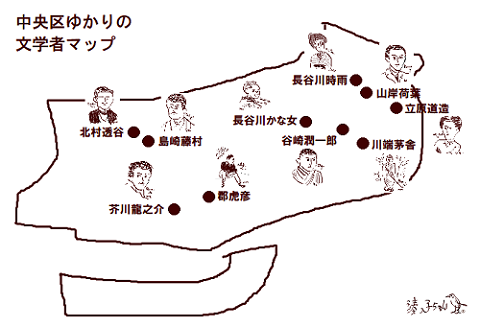
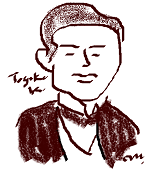
Kitamura Tokoku (Kitamura)
Meiji 1st year-Meiji 27 (1868-1894)
Literary critic and poet. Born in Odawara. In 1880 (1880), he moved to Tokyo Yazaemon-cho, Kyobashi-ku (currently Ginza 4-chome, Chuo-ku). Transferred to Yasuaki Elementary School. He is involved in the liberal rights movement set in Ginza. 1889 (1889) Announced "Shu Prison's Poet" and "Renna Song". Participated in the creation of the "Literature World" and presented numerous criticisms such as "Internal Life Theory".
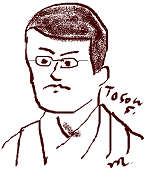
Toson Shimazaki (Shimazaki)
Meiji 5-Showa 18 (1872-1943)
Poet and novelist. Born in the house of Shoya in Nagano Prefecture. In 1881 (1881), he moved to Yariya-cho, Kyobashi-ku (currently Ginza 4-chome, Chuo-ku). He studied at Yasuaki Elementary School and graduated from Meiji Gakuin. Through the activities of the literary world, he learned Kitamura Toya and was deeply influenced. From 1907 (1907) to the following year, "Spring" was written at Kaikaikan (currently Tsukuda 3-chome, Chuo-ku), and his representative work "Before Dawn" was performed at Tsukiji Small Theater.
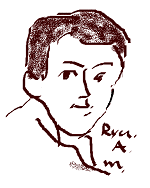
Ryunosuke Akutagawa, Ryunosuke
Meiji 25-Showa 2 (1892-1927)
Noveler. Born in a milk ranch in 8-chome, Irifune-cho, Kyobashi-ku (currently Akashi-cho, Chuo-ku). Soon after birth, he moved to his mother's home in Honjo Ward. Graduated from Tokyo Imperial University. Entered the gate of Soseki Natsume and became a doujin of the third and fourth "Shinshicho". Representative works include "Rashomon", "Nas", "Hell thread", "Kappa".
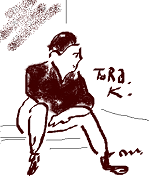
Torahiko Koori (Koori Torahiko)
Meiji 23-Daisho 13 (1890-1924)
Playwright. Born in Minami Hatchobori 3-chome, Kyobashi-ku (currently Minato 1-chome, Chuo-ku). He entered the English Department of Tokyo Imperial University from Gakushuin. "Shirakaba." In 1913 (1913), "Dojo-ji Temple" will be performed at Jiyu Theater. He traveled to Europe and wrote "Tetsuwa" and "Yoshichoki". It was performed in London and gained popularity.
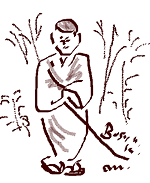
Bosha Kawabata (Kawabata)
Meiji 30-Showa 16 (1897-1941)
A poet. Born in 2-chome Kakigaracho, Nihonbashi-ku (currently Nihonbashi Ningyocho 2-chome, Chuo-ku). He became a painter and studied under Ryusei Kishida. Because of his illness, he devoted himself to Haiku and studied under Kyoshi Takahama. "grayheaded cuckoo," he said. There are "Bosha Kawabata Kushu", "Kagon" and "Shirachi" in the haiku collection.
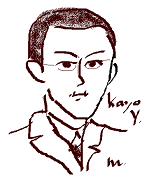
Kayo Yamagishi (Kayo Yamagishi)
Meiji 9-Showa 20 (1876-1945)
Noveler. Born in Aburamachi, Nihonbashi-ku (currently Nihonbashiodenmacho). He went to Tokyo College of Technology (the predecessor of Waseda University) and studied under Shoyo Tsubouchi. Later he entered the gate of Koyo Ozaki. "Ikuriyusha" is the same person. Announced "Nihonbashi Literature" based on the townscape where he was born and raised, such as wholesale district and geisha district. "The beginning of service", "the temperament of this life", etc. Later, he worked for the Yomiuri Shimbun as a commentator.
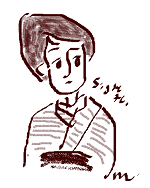
Shigure Hasegawa (Shigure Hasegawa)
Meiji 12-Showa 16 (1879-1941)
Kabuki screenwriter, legendary writer, novelist, essayist. Born in Aburamachi, Nihonbashi-ku (currently Nihonbashiodenmacho). Debuted in 1905 (1905) with "Umishione". He builds his position in the biography of women. In 1933 (1933), he published the magazine "Keiku" and sent many female writers and critics to the world. In his essay, "Old Mon Nihonbashi" is a masterpiece.
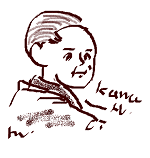
Kanajo Hasegawa (Hasegawa)
Meiji 19-Showa 44 (1887-1969)
A poet. Born in Honishi-cho, Nihonbashi-ku (currently Nihonbashi 2-chome). Supports the magazine "Kareno" presided over by her husband, Kaizo Tomita (Reiyoshi Hasegawa). He studied under Kyoshi Takahama. In 1930 (1930), he launched "Suimei" and became a pioneer of female poets. The phrasebook includes "Ametsuki" and "Lake Flute", and the essays include "Koyuki" and "Yukiki".
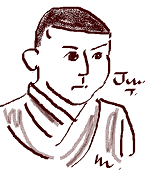
Junichirou Tanizaki (Tanizaki)
Meiji 19-Showa 40 (1886-1965)
Born in Kakigara-cho, Nihonbashi-ku (currently Nihonbashi Ningyocho 1-chome, Chuo-ku). He studied at Sakamoto Elementary School. Representative works such as "tattoo", "love of chijin", and "Shunkinsho", which are considered to be aesthetics. He also published naturalist literature and modern translations of The Tale of Genji. "Hosoyuki" published after the war is considered to be the ultimate in Tanizaki literature.
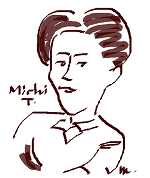
Michizo Tachihara (Michizo Tachihara)
Taisho 3-Showa 14 (1914-1939)
A poet. Architect. Born in 3-chome, Tachibanacho, Nihonbashi-ku (currently Nihonbashi Hisamatsucho, Chuo-ku). He studied at Hisamatsu Elementary School and graduated from the Department of Architecture, Faculty of Engineering, Tokyo Imperial University. I liked tanka poetry since I was a teenager and was influenced by Tatsuo Hori. Participated in the first publication of the poetry magazine "Shiki". Announced a collection of poems "Some by Kayakusa" and "Poetry of dawn and evening". Received the 1st Chuya Nakahara Award.
 He was born and raised in Chuo-ku and represents the times. He was born and raised in Chuo-ku and represents the times.
It was interesting to note that literary activities that pioneered the times were unfolded here in Chuo-ku, as well as that each literary person was connected in Chuo-ku.
In addition, many works were born in Chuo-ku, and the appearance of the town at that time is alive in the story, and conveys the scene now. It remains in many films, not only in novels and plays, but also in films.
(The photo shows the "Kitamura Toya / Toson Shimazaki Monument" built at Yasuaki Elementary School and Yanagi Nisei in Ginza)
Correspondent Minato kid, Chuo-ku Tourism Association

No. 34 February 11, 2019
Ningyocho, Hamacho, Higashinihombashi area| Tsukuda, Tsukishima, Kachidoki and Harumi areas| Nihonbashi, Kyobashi and Yaesu areas| History, culture| Tsukiji, Shintomi, Minato area| Kayabacho, Hatchobori, and Shinkawa areas| Ginza area
Page top▲
[Sam]
February 6, 2019 12:00
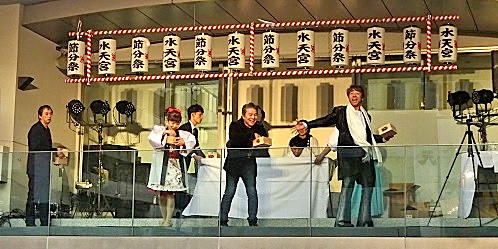 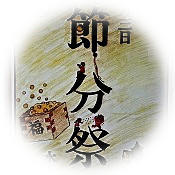 On February 3, the annual “Mame Maki” was held at Suitengu after the Setsubun Festival. On February 3, the annual “Mame Maki” was held at Suitengu after the Setsubun Festival.
This year, "Winter! bean-throwing ceremony! The mini-live consists of one and two parts, consisting of a special guest bean-throwing ceremony, in addition to attendees and general participants.
This year's special guests are Isao Bito and Shinichi Ishihara of the main cast members of the musical "Happy Time" scheduled to be performed from February 28 to March 5 at Honda Theater in Shimokitazawa, and a mini-concert on the day Satoko Yamano, an anime and nursery rhyme singer.
When Fukuzu and sweets are scattered in bags from the balcony, your hands grow all at once to give "Fuku".
shrine hall and shrine office were rebuilt in 2016, and the newly dressed grounds are booming with the shouts of many people.
[Asunaro]
February 5, 2019 14:00
“clothing clothes”, “kisararai”, “seisararai”, etc.
There are various theories about the etymology of Kisaragi.
Among them, the theory that "the moon where grass shoots protrude" turned.
I want to win a vote in a sense. 。 。
In February of the new calendar, the cold is still severe, and the plums at Kiyomasa Koji Temple are plums.
It has the beauty of winter trees.
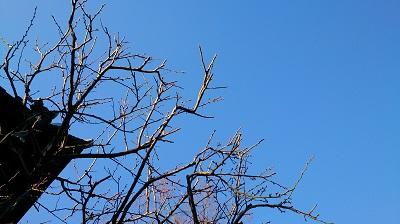
On the calendar, spring begins.
"Plum" is the coldest season of the year when it blooms.
But it's the spring season.
I feel the coming of spring. This sensibility is wonderful.
It's almost time to release Kiyoka after cold bitterness.
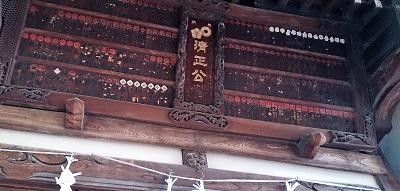
◆Kiyomasa Temple in Nichiren sect
2-59-2, Nihonbashihamacho, Chuo-ku, Tokyo
[Minato kid]
February 2, 2019 09:00
Hello, this is Minato kid.
There are a variety of public things on the sidewalk. Not only town information boards and monuments, but also if you look up a little, signs, traffic lights, curve mirrors, etc. that protect the safety of pedestrians, and if you look at your feet, you will be drawn on manhole patterns and pavement tiles The pictures will catch our eyes and delight us.
Today, even in such a situation, I collected illustrations with nostalgic touches and retro ones with rare modeling.
♪ Various information boards
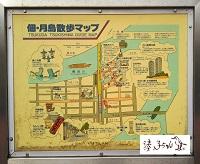
This is a tourist information board found on the sidewalk of Tsukuda Nakadori. Handwritten pictures and letters will be fun just by looking at them! Under the title of "Tsukuda / Tsukishima Walking Map", here we introduce Tsukuda Island is the birthplace of Tsukudani, River City 21, Ishikawajima Lighthouse Ruins, etc., and Monja Street, Tsukishima Kannon, a little further We stretch and guide Kachidokibashi.
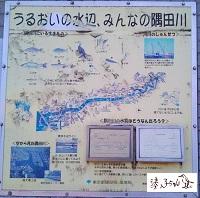
This is the Sumida River Terrace. This panel is installed on the wall on the sidewalk at Tsukuda-ohashi Bridge. Introducing creatures gathering on the terrace, such as fish and wild birds, and how the water quality deteriorated in the 1930s improved using graphs. The graph part is open and closed.
♪ Flower bed on the sidewalk

A green plate with the word "flower azalea of the ward" stands on the flower bed on the sidewalk. It looks like it was installed in the city. It's a plate that you don't see much now, so it may be a long time ago. It is the same type, and the right is the "tree of the ward".
♪ This and so on
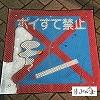
This mark was found on Namiki-dori St. in Ginza, which is prohibited from poisting. This is embedded in the pavement of the sidewalk. Currently, the design is different from the mark seen on the sidewalk in Chuo-ku, so it may be a long time ago.
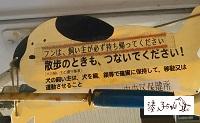
It is a plate that calls for dog manners, often installed on pillars on the sidewalk and concrete walls. It states, "Please connect when walking" and "Let's bring back dog droppings properly."
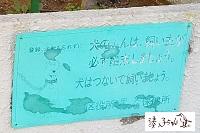
It's a bit hard to see, but this is a sharp picture touch, saying, "Let's keep your dog connected" and "don't forget registration and vaccination."
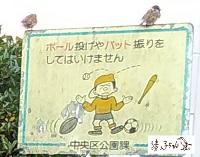
It is a signboard that prohibits ball play, installed in Tsukuda Park. I like an illustration with a nostalgic feeling!
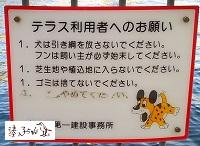
This is a precautionary note installed on the Sumida River Terrace and the protective fence. Requests to terrace users include the precautions for walking dogs, not entering the planting, and not throwing away garbage. The illustration of the dog is cute.
♪ A lot of water
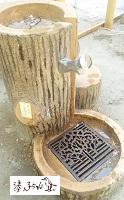
It is a water supply installed in a park in the Minato area. The shape of the stump is fairy tale. The table on which children ride when drinking water is also a small stump. The iron fence part has a wooden pattern and is quite elaborate. This worried design doesn't fade over time.
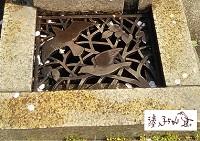
It's the water supply of Tsukuda moat. The iron fence is shaped like a pigeon.
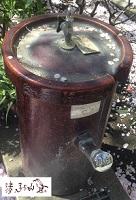
It is a water supply installed in a park in the Tsukuda area. It looks like a potted plant. There is a plate called "Please cooperate with water saving Chuo-ku". The season is coming.
♪ Astringent

It is a well found along the Shin-ohashi-dori St. The manufacturer could not be identified, but various wells can be found in various parts of Chuo-ku. Wells have trademarks and numbers, but there are so many types, so it's interesting to compare them.
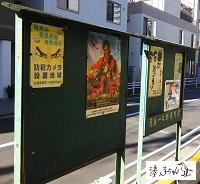
This is a bulletin board on the sidewalk found in the Tsukishima area. The notice part is green board and the eaves are also wooden. Nowadays, there are not many wooden bulletin boards left. It's very valuable.

This is a public telephone installed in a park in the Minato area. The round roof is illuminated, and the door is attached to the table where the telephone is installed. Recently, the number of public telephones has decreased. The appearance feels nostalgic, but the phone inside is relatively new.

It is a stone fire prevention water tub found in each area of Chuo-ku. Fire tubs are often placed in front of the entrance of the house. A long time ago, we stored water here in case of emergency.
"When the sparks flew in the air raid, I drained water from the tub and went home so that it would not cause a fire," said a local person.
※ The fire prevention water tub I met this time contained the personal name, so I will introduce it with illustrations. Thank you for your understanding.
 ♪ Stylish object ♪ Stylish object
It is a clock tower located on a terrace in the Nihonbashi Hakozaki area.
There's a cute object on the top. There's a small child on the helicopter.
This is a clock tower built in commemoration of the expansion and maintenance of the Sumida River Terrace when the construction of the Eidan Hanzomon Line was carried out in 2001.
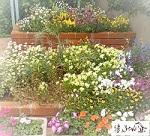
♪ Flowers of local people
As an old landscape of Chuo-ku, you can see many potted plants lined up at the eaves.
In areas where private houses are dense and there is little green, it seems that it was customary to put potted plants in order to feel the flowers as close as possible. In addition to such potted plants, you can also see flower beds grown in the town council.
When you see the flowers blooming beautifully, you feel like there is a smile of people there, and we walking naturally feel fun. The sidewalk in Chuo-ku is interesting!
Correspondent Minato kid, Chuo-ku Tourism Association

No. 34 January 29, 2019
1
|
Links
|
![]()







![]() .)
.)![]() nel CRAFT CHOCOLATE TOKYO
nel CRAFT CHOCOLATE TOKYO![]()
![]() HAMACHO HOTEL
HAMACHO HOTEL![]()

















 He was born and raised in Chuo-ku and represents the times.
He was born and raised in Chuo-ku and represents the times.

 On February 3, the annual “Mame Maki” was held at Suitengu after the Setsubun Festival.
On February 3, the annual “Mame Maki” was held at Suitengu after the Setsubun Festival.











 ♪ Stylish object
♪ Stylish object


